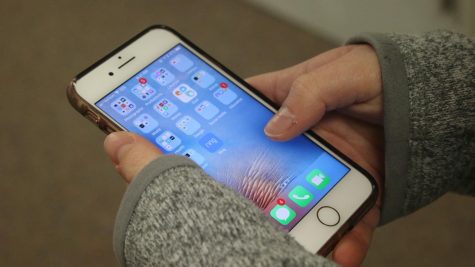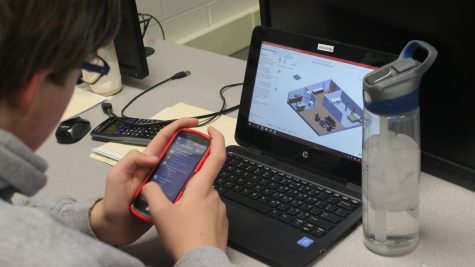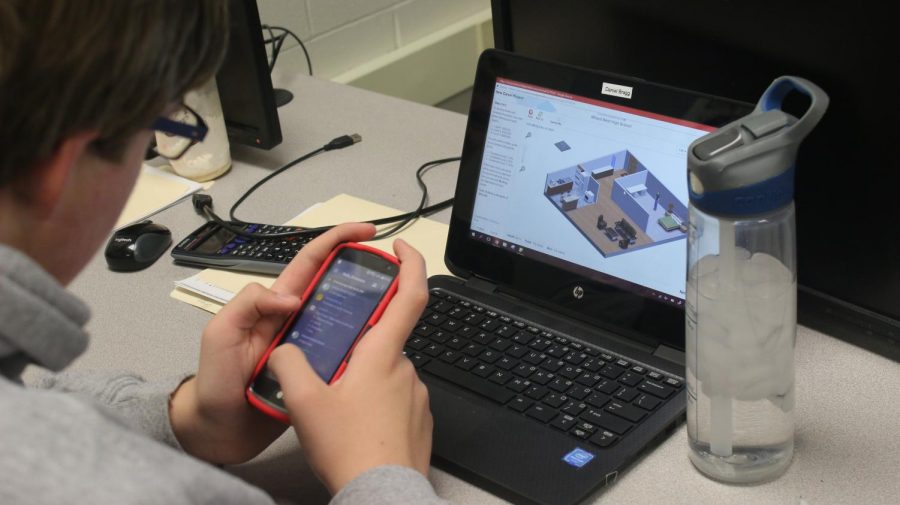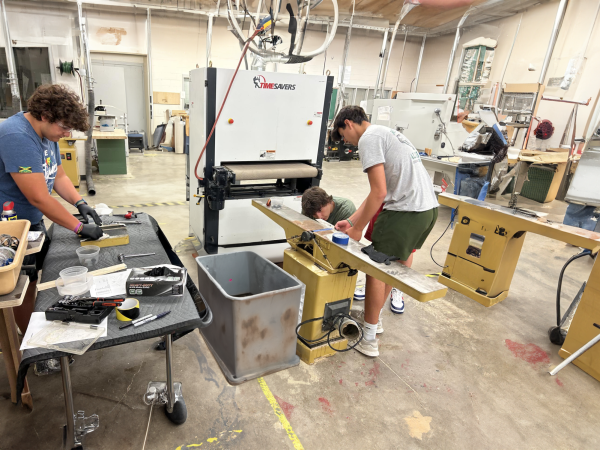Dangers of Screen Time
The Effects Technology Has On People
February 13, 2018
From phones to Apple watches, technology has been integrated everywhere in students’ lives, and Millard students are no exception. The implementation of laptops and SMART Boards in schools has subjected students to an excessive amount of screen time. While technology can make life a lot easier, the effects can be extremely dangerous.
According to market research firm Childwise, children ages 5 – 16 spend around six and a half hours a day in front of a screen compared to three hours in 1995. In addition to using laptops at school all day, many students go home and spend more time on their tech devices. Some people are unaware of how much time they spend in front of screens due to the fact that they are everywhere. Screens are not just televisions anymore; they are IPads, laptops, SMART Boards and much more.
Sophomore Ellen Burling is among the majority of teens who spends numerous hours on her phone. On top of using her laptop during the school day, Burling goes home and spends more time in front of screens.
“I usually try to come home and do my homework, but if I don’t understand it I’ll put it off and watch Netflix for two hours,” sophomore Ellen Burling said. “I just end up getting distracted by my phone and before you know it, I’m watching old episodes of The Office.”
Binge watching, watching episodes of a television show in a row, is extremely normal among most teenagers. This habit has increased screen time leading to physical effects like myopia, a condition where objects up close appear clearly, while objects far away may appear blurry. Too much screen time is raising rate of childhood Myopia according to the University of Southern California Keck School of Medicine.
Business teacher Melissa Schram spends a large portion of the day dealing with screens due to the classes she teaches. Schram teaches multiple classes that require computer use such as Digital Design and Information Tech Applications. Students taking Information Technology Applications have to use computers everyday to develop skills in word applications and explore web technologies. Digital Design interacts with the digital design process model through the use of technology, advanced computer navigation, graphic communications design, image generation and assembly, computer desktop publishing and web page.
“As a teacher I see screen time having a very negative impact on students,” Schram said. “I do not think it has personally affected me because I do not like to just stare at my phone when I go home.”
Along with the increasing rate of childhood myopia, excessive screen time has been linked to raised risk of anxiety and depression. Technology provides people with a constant, overwhelming stream of information. Often people feel they need to be updated at all moments of the day; this unwavering inundation of Tweets, emails and text messages can create stress. High school students already face a plethora of causes for anxiety and screen time is not helping.
According to the American Psychology Association, studies find that anxiety has increased so much that typical school children during the 1980’s reported more anxiety than child psychiatric patients did during the 1950’s.
“High school is a place that nurtures anxiety among students,” junior Travis Fischer said. “Looking at screens all day stresses high school students’ eyes.”
Fischer is not the only student who feels this way. Junior Gaurav Khot experienced this stress from strenuous school work and extracurricular activities. During his tennis season, Khot averaged eight hours of sleep per week due to multiple AP classes and clubs.
“During first semester I had four AP classes, one honors class and tennis everyday.” Khot said. “Because of a constant stream of information, I was always playing catch up and was never able to actually learn the current information.”
Suicide is the second-leading cause of death among people ages 15 – 24; teenage suicide rates have nearly doubled from 2007 – 2015 according to the Centers for Disease Control and Prevention. One symptom of excessive screen time is disengaged behavior, which is likely to contribute to increased rates of teenage depression. The popularization of technology has been extremely prevalent since 2000 and could coincide with the raised depression and suicide rates.
Excessive technology use could be the new cigarette. We are not fully aware of all the effects of screens because they are relatively new. Originally cigarettes were sold to the social elite as a luxury item, they then integrated everywhere in society. In the 1950’s cigarettes were marketed as healthy and glamorized by various famous people, when in reality they were killing people. 50% of young people feel addicted to their tech devices reported Common Sense Media. Nowadays, technology is used as a marketing tool by many large corporations without much disclaimer about physical effects. The absence of a disclaimer could be from lack of knowledge about long term effects or potential deceptive marketing.
Although technology can be extremely helpful, the impact screens have on people should be acknowledged. The chilling effects screens produce should be accessed more in depth for the future.



















